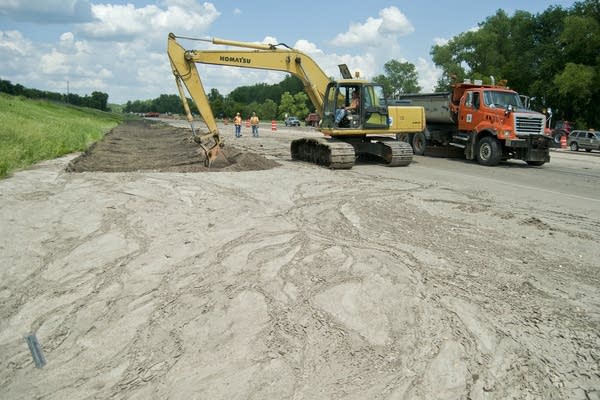One hit after another: Cities, counties deal with expensive flood recovery

Go Deeper.
Create an account or log in to save stories.
Like this?
Thanks for liking this story! We have added it to a list of your favorite stories.
Teams from the Federal Emergency Management Agency will assess flood damage in Minnesota on Tuesday, and state officials expect a federal disaster declaration by the end of the month.
Across Minnesota, cities and counties are tallying up millions of dollars in damage to roads and water treatment systems as flood waters recede.
The threshold for federal assistance is about $7 million in uninsured damage to public infrastructure statewide. Carver County alone has already surpassed that with an estimated loss of more than $9 million, Emergency Manager Deb Paige said.
"There have been roads washed out and unusable all over the county," Paige said. "It's almost every city and township that have damage to roads."
Turn Up Your Support
MPR News helps you turn down the noise and build shared understanding. Turn up your support for this public resource and keep trusted journalism accessible to all.
But it wasn't just the county's roads. The wastewater treatment plant in the city of Norwood Young America was overwhelmed when about 9 inches of rain fell over two days. City Administrator Steve Helget said the pumps just couldn't keep up.
"Once we got to that point, the breaking point, it just went," he said. "Water just came, and there was no stopping it."

The pumps aren't designed to be completely submerged and their circuits were fried. Estimated cost to fix them: $1 million. That's not counting the toll the storm took on private property. The city received about 50 calls from residents who had sewage back up into their basements.
In Hennepin County, where officials will need to spend an estimated $6 million on flood related repairs, Emergency Manager Eric Waage said it's been a tough month.
"It was little different than a typical disaster when people think of a single event," Waage said. "This has been just body blows coming in rapid succession."
The Twin Cities area has seen nearly a foot of rain this month, making it the wettest June since 1874, according to the National Weather Service.
But as bad as the flooding has been for large swaths of Minnesota, it could have been much worse, State Emergency Management Director Kris Eide said.
"It kind of creeped up instead of rushing in, like the one that happened in Duluth a couple years ago," Eide said. "And then, in 2010 and 2007 down in the southeast, it was like 10 inches of rain within 12 hours. That's when you get that horrible flash flooding. That's when your homes float away, and that's really bad."
This time, the worst thing most homeowners saw was water in their basements. That's why it's unlikely the federal government will step in to bail them out.
But Eide predicts state and local governments will almost certainly qualify for federal aid. It will take teams from his office and FEMA about two weeks to canvas all the counties affected by the flooding.




